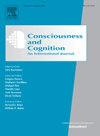心理意象动力学
IF 2.1
3区 心理学
Q2 PSYCHOLOGY, EXPERIMENTAL
引用次数: 0
摘要
心理意象现象学可以揭示潜在心理表征的结构,但由于其私密性,其进展受到限制。通过现象学的再创造任务,我们阐明了心理意象的动态。具体来说,时间粒度、对象操作速度、内容展开的平滑度和想象内容的时间稳定性。为了衡量这些属性,我们要求一大批参与者(N = 827)在六个任务中重现他们想象力的这些方面。结果表明,想象的时间特征在不同的时间尺度上展开,尽管因素分析表明,这些任务的差异可以通过两个因素来解释;心理意象的时间能力和稳定性。此外,我们将这些规律与视觉感知的记录进行了对比,表明想象内容缓慢但比感知更稳定。然而,想象和感知都有一个共同的限制;保持相同大小的意识体验时间窗口。本文章由计算机程序翻译,如有差异,请以英文原文为准。
Dynamics of mental imagery
Phenomenology of mental imagery can reveal the structure of underlying mental representations, yet progress has been limited because of its private nature. Through a phenomenology-recreation task we elucidate the dynamics of mental imagery. Specifically, the temporal grain, speed of object manipulation, smoothness of contents unfolding, and temporal extent of stability of imagined contents. To gauge these properties, we asked a large cohort of participants (N = 827) to recreate these aspects of their imagination in six tasks. Results showed that temporal features of imagination unfold at distinct timescales, though a factor analysis showed that variance in these tasks could be accounted for via two factors; temporal ability and stability of mental imagery. Additionally, we contrast these regularities with those documented for visual perception, showing that imagined contents are sluggish but more stable than perception. However, both imagination and perception share a common constraint; maintaining identically sized temporal windows of conscious experience.
求助全文
通过发布文献求助,成功后即可免费获取论文全文。
去求助
来源期刊

Consciousness and Cognition
PSYCHOLOGY, EXPERIMENTAL-
CiteScore
4.30
自引率
8.30%
发文量
123
期刊介绍:
Consciousness and Cognition: An International Journal provides a forum for a natural-science approach to the issues of consciousness, voluntary control, and self. The journal features empirical research (in the form of regular articles and short reports) and theoretical articles. Integrative theoretical and critical literature reviews, and tutorial reviews are also published. The journal aims to be both scientifically rigorous and open to novel contributions.
 求助内容:
求助内容: 应助结果提醒方式:
应助结果提醒方式:


